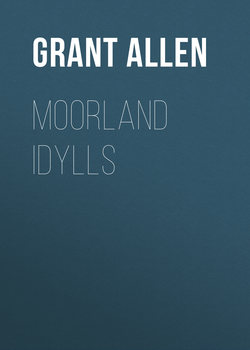Читать книгу Moorland Idylls - Allen Grant, Griffiths Arthur - Страница 9
VIII.
IN LEAFLESS WOODS
ОглавлениеYes: these bare boughs, I take it, are not all pure loss. They have their consolations; they have their artistic and intellectual value. They show us, after all, the true inwardness of the tree; they enable us to realize, as none could otherwise do, the infinite diversity of architecture and ground-plan in the design and execution of the forest denizens. While dense masses of foliage clothe and obscure the boughs with their gay greenery we can gain but a rough idea of the underlying structure. But just as a Leonardo or a Luca Signorelli must needs pry beneath skin and muscle to discover the actual framework and bony supports of the body, so the lover of the trees desires from time to time to catch some glimpse of the very limbs and joints of oak or maple – to get rid of the green covering in favour of the naked underlying reality. So only can one enjoy the delicate lissom twigs of the silver birch, etched in tender grey against the hard blue sky; so only can one observe the forked upright branches of the Lombardy poplar, like natural candelabra, in striking contrast with the long hanging boughs of the weeping-willow, divided and subdivided into pendulous twigs, and losing themselves at last in fine spray of living threads, like a wind-driven cataract. Every kind of forest-dweller has thus its own special beauty of architectural plan; and every one of them can be realized in all its naked grace and variety of outline only when relieved of the glorious green weight that so richly concealed it.
And bare boughs are instructive, too, as well as beautiful. They suggest to one the endless vicissitudes and cataclysms in the history of growth; they show us how the knotted trunk acquires its final form, and by what course of evolution branch added to branch builds up at last the whole noble shape of the buttressed beech or the spreading horse-chestnut. Take, for example, our dear old friend the ash. In summer you can hardly discern through a canopy of green the outline of his bent boughs, curved downwards by their own weight of heavy feathery foliage, each leaf a little branch with numerous spreading leaflets. But when autumn comes, and the heavy leaves drop off one by one, you get revealed at once the peculiar beauty of his mode of growth – that delicious combination of angular and curved form which makes the ash the acknowledged king of the winter woodland. All the branches dip gracefully in a long arch towards the end, and then rise again with an abrupt curve; this hooked type of terminal bough being so distinctive and so well marked an ashy feature that you can tell an ash by it afar off in its wintry nakedness as you whirl by in a train at a mile’s distance, especially if it happens to be silhouetted against the sky on a bare ridge or hilltop. The growth of the oak, on the other hand, so gnarled and irregular, is quite equally characteristic; while the disposition of the buds soon reveals the fact that this very irregularity itself owes its origin in the last resort to a survival of the fittest among many abortive branches. For the oak tries, as it were, to grow symmetrically like a conifer; but frost and wind play such havoc with its delicate young shoots that it never succeeds in realizing its ideal, but grows habitually distorted against its will by external agencies.
Nor does our winter leave us wholly leafless. Even in England we have a fair sprinkling of native-born evergreens. And I really don’t know that I would wish them more frequent; for nothing can be more monotonous, more sickly sweet, than the unvarying green of tropical forests; while the grateful contrast of drooping birch twigs or big-budded bare oak branches with the dark and sombre verdure of our northern Scotch firs, is in itself one of the chief charms of English winter. During the Tertiary period, indeed, our English woods were full of large-leaved evergreens of the southern types – camphors and cinnamons, and rhododendrons and liquidambars; but with the coming on of the Great Ice Age those lush southern forms were driven southward for ever, leaving us only the Scotch fir, the yew, and the juniper, with a few broader-leaved kinds of shiny evergreen, of which holly, ivy, and box are the most familiar examples. These, with the exotic laurels and aucubas, the daphnes and the laurustinuses, are quite enough to diversify pleasantly our northern scenery. Then our recent acquisitions of exotic conifers, like the Douglas pines, the sequoias, and the beautiful glaucous firs, “the greenest of things blue, the bluest of things green,” which now abound in plantations, have done much to redeem the surviving reproach of the glacial epoch.
